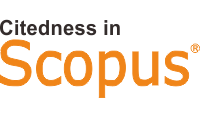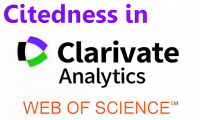The Standard for Allocating Zakat Social Funds as An Operational Expense of Nonprofit Organizations in Indonesia, Sudan and Algeria
DOI:
https://doi.org/10.46870/milkiyah.v3i1.788Keywords:
Funds, Zakat, Nonprofit OrganizationAbstract
Zakat in the socio-economic structure of society needs to be managed productively and professionally so that it leads the welfare of society. This study aims to reveal standards for the allocation of zakat social funds as an operational expense for nonprofit organizations. This research uses a descriptive qualitative type. We analyse secondary data retrieved in nonprofit organizations in three different countries (Indonesia, Sudan and Algeria). The result of the study revealed that Indonesia has two types of zakat management institutions, the National Amil Zakat Agency (BAZNAS) and Amil Zakat Institute (LAZ). Furthermore, Sudan possesses the Sudanese Zakah Chamber (SZC) or the Zakat Council and Algeria has Kotak Zakat. The pattern of zakat collection in Indonesia applies payments with a voluntary principle, however the zakat has been integrated with taxes so that they can submit claims for zakat payments. In Sudan, payments are made on the principle of mandatory for its citizens accompanied by sanctions for those who ignore it and nonmuslims are obliged to pay a social solidarity tax. Meanwhile, in Algeria, payments are made on a mandatory basis for private companies and voluntary for individuals. In addition, in the pattern of zakat distribution, the three countries distribute according to the guidance of the Qur'an (8 Asnaf) but have slight differences in the priority scale in which Indonesia prioritizes distribution to the poor, Sudan prioritizes the needs of each Mustahik and Muzakki is allowed to distribute to relatives as much as 20% of the obligatory zakat, meanwhile Algeria which prioritizes the poor, people in need and Fisabilillah. Then, the standard for the allocation of zakat social funds that may be taken as operational costs for nonprofit organizations handling zakat in the three countries is 12.5%.
References
Amelya, S. (2019). Rekontruksi Laporan Keuangan Entitas Nirlaba Berdasarkan Standar Akuntansi Keuangan Nomor 45 Tentang Laporan Keuangan Entitas Nirlaba (Studi Kasus pada Lembaga Kesejahteraan Sosial Anak Al-Iman Wuluhan). Undergraduate Thesis, Universitas Muhammadiyah Jember.
Amiruddin, K. (2015). Model-Model Pengelolaan Zakat di Dunia Muslim. Ahkam: Jurnal Hukum Islam, 3(1), 137–164. https://doi.org/10.21274/ahkam.2015.3.1.137-164Andriani, M. (2017). Regulations on Supporting the Business Zakat Implementation in Indonesia. 2nd International Conference on Indonesia Economy and Development (ICIED), 126, 144–147. https://doi.org/10.2991/icied-17.2018.27
Anthony, R. N., Govindarajan, V., Hartmann, F. G. ., Kraus, K., & Nilsson, G. (2014). Management Control Systems: European Edition. In Tata McGraw-Hill Publishing Company Limited. New Delhi.
Ascarya, & Yumanita, D. (2018). Analisis Rendahnya Pengumpulan Zakat Di Indonesia Dan Alternatif Solusinya. In Bank Sentral Indonesia (Vol. 9). Indonesia.
Bowman, W. (2006). Should donors care about overhead costs? Do they care? Nonprofit and Voluntary Sector Quarterly, 35(2), 288–310. https://doi.org/10.1177/0899764006287219
Bungin, B. (2017). Metodologi Penelitian Kualitatif. Jakarta: Rajawali Pers.
Canggih, C., Fikriyah, K., & Yasin, A. (2017). Potensi dan Realisasi Dana Zakat Indonesia. Al-Uqud : Journal of Islamic Economics, 1(1), 14–26. https://doi.org/10.26740/jie.v1n1.p14-26
Husein Syahatah. (2005). Cara Praktis Menghitung Zakat. Samarinda: Kalam Pustaka.
Ilyas, M. J. (2020). Pengaruh Transparansi, Akuntabilitas, dan IGCG terhadap Tingkat Kepercayaan Muzakki di Lembaga Amil Zakat Dompet Amanah Umat. Akuntansi : Jurnal Akuntansi Integratif, 6(2), 112–125. https://doi.org/10.29080/jai.v6i2.289
Jusuf, J. (2014). Analisis Kredit untuk Credit (Account) Officer. Jakarta: Gramedia Pustaka Utama.
Kalimah, S. (2018). Urgensi Peran Amil Zakat di Indonesia dalam Mewujudkan Kesejahteraan Mustahiq. El-Faqih: Jurnal Pemikiran Dan Hukum Islam, 4(2), 24–49. https://doi.org/https://doi.org/10.29062/faqih.v4i2.18
Koteen, J. (1997). Strategic management in public and nonprofit organizations: managing public concerns in an era of limits. Choice Reviews Online, 35(04), 343. https://doi.org/10.5860/choice.35-2208
Lammers, J. (2003). Know your ratios? Everyone else does. The Nonprofit Quarterly. 10(1), 1–4. https://doi.org/https://doi.org/10.1177/0275074020913989
Lessy, Z. (2013). Historical Development of the Zakat System Implications for Social Work Practice. EMPATI: Jurnal Ilmu Kesejahteraan Sosial, 2(1), 1–16. https://doi.org/10.15408/empati.v2i1.9752
Luthfi, H. (2017). Implementasi Undang-Undang Nomor 23 Tahun 2011 Tentang Pengelolaan Zakat Di Baznas Kabupaten Tangerang. UIN Syarif Hidayatullah.
Mahdania. (2018). Penetapan Biaya Administrasi Platfrom di Situs Kitabisa.com Perspektif Hukum Ekonomi Syariah. UIN Sunan Gunung Djati Bandung.
Nainggolan, P. (2005). Manajemen Keuangan Nirlaba. bogor: Epistema Institute.
Nurhayati, & Wasilah. (2015). Akuntansi Syariah di Indonesia. Jakarta: Salemba Empat.
Okten, C., & Weisbrod, B. A. (2000). Determinants of donations in private nonprofit markets. Journal of Public Economics, 75(2), 255–272. https://doi.org/10.1016/S0047-2727(99)00066-3
Oleck, H. L. (1988). Nonprofit Organizations, Organizations, and Associations. USA: Prentice Hall.
Pontoh, C. R. S. (2013). Penerapan Laporan Keuangan Organisasi Nirlaba Berdasarkan Psak No 45 Pada Gereja BZL. Jurnal Riset Ekonomi, Manajemen, Bisnis Dan Akuntansi, 1(3), 129–139. https://doi.org/10.35794/emba.v1i3.1651
Ridlo, M., & Setyani, D. (2020). Pengaruh Zakat, Inflasi Dan Perkembangan Usaha Mikro Kecil Menengah Terhadap Pertumbuhan Ekonomi Tahun 2011-2018 (Studi Kasus Di Indonesia). Jurnal Ekombis, 6(1), 75–83. https://doi.org/https://doi.org/10.35308/ekombis.v6i1.2010
Sari, A. C. (2018). PENGELOLAAN ZAKAT DI NEGARA SUDAN. ZISWAF : Jurnal Zakat Dan Wakaf, 4(2), 347–364. https://doi.org/10.21043/ziswaf.v4i2.3050
Sugiyono. (2016). Metode Penelitian Kuantitatif, Kuaitatif dan R&D. Bandung: Alfabeta.
Syaputra, A. D. (2016). Perananan LAZISMU dalam mengentaskan Kemiskinan. Journal of Islamic Economics Lariba, 2(2), 49–56. https://doi.org/10.20885/jielariba.vol2.iss2.art4
Trussel, J. M., & Parsons, L. M. (2007). Financial Reporting Factors Affecting Donations to Charitable Organizations. Advances in Accounting, Vol. 23, pp. 1–16. https://doi.org/10.1016/S0882-6110(07)23010-X
Widiastuti, Soeroto, Z. and H. (2019). Handbook Zakat. Surabaya: Universitas Airlangga Pers.
Downloads
Published
How to Cite
Issue
Section
License
Copyright (c) 2024 Milkiyah: Jurnal Hukum Ekonomi Syariah

This work is licensed under a Creative Commons Attribution-NonCommercial 4.0 International License.

















